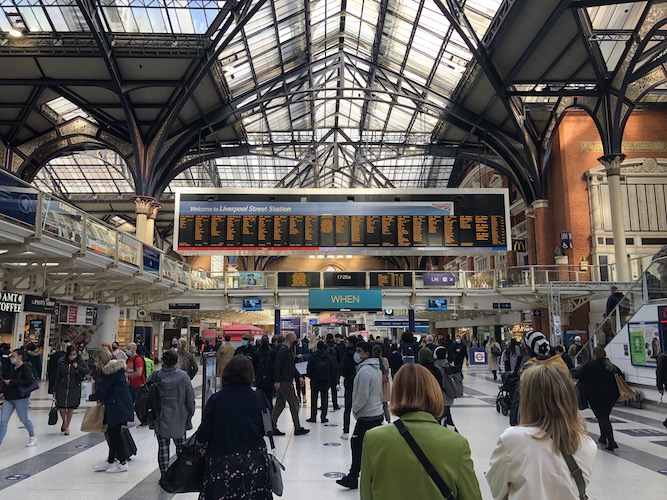There is a populist addiction to “London exodus” stories. They excite media catastrophism and fuel ideologue narratives ranging from “white flight” to “social cleansing” to the “London-is-a-fallen-hellhole” strand of contemporary anti-London sentiment.
This helps explain why an estimate made in January that as many as 700,000 overseas-born Londoners might have left the city since the start of the pandemic has attained the status of a fixed and proven truth. But was it an accurate gauge of the size of the capital’s population and is it now?
The first thing to note is that Michael O’Connor and Jonathan Portes, the number crunchers who arrived at the 700,000 figure for the Economic Statistics Centre of Excellence, advised at the time that “much of this may be temporary, if non-UK born people return to London after the pandemic”. The second thing to note is that others believe different conclusions about London’s Covid-period population size can be drawn from the same data.
Madeleine Sumption at Oxford University’s Migration Observatory argued that changes in the way the Office for National Statistics (ONS) Labour Force Survey (LFS) – the key statistical source – has been compiled under lockdown conditions might have skewed its findings. She wrote: “When the pandemic hit, ONS switched to a socially distanced method of recruiting people into statistical surveys, and this appears to have disproportionately affected migrants’ participation.”
The socially-distanced method was recruiting survey respondents by telephone rather than through face-to-face interaction. In line with Sumption, Ian Gordon of the London School of Economics thinks this has seriously discouraged participation by the quarter or so of people in Britain born overseas – many of them Londoners – who lack confidence when speaking English. “This would substantially reduce the overall representation within the LFS (after the lockdown) of those born overseas, relative to those born in the UK – even if their actual numbers had not changed,” Gordon writes.
What, then, is actually going on with London’s population size? The GLA’s City Intelligence department has produced a report which looks at all the available evidence and decided it is still “too early to reliably quantify population change since the start of the pandemic” but, even so, “it is hard not to conclude that the population of London is likely to have fallen”. That said: “The scale of such a fall is likely to be far short of the more dramatic figures reported in the press in recent months.”
The report’s view is that uncertainty about this issue is likely to continue for some time to come, though it does have “good evidence” about some of the factors at work.
One concerns what is called “natural change”, which means the difference between the number of births and the number of deaths. In London, the birth rate has long been higher than the death rate and this has been a big driver behind our 30-year population boom. But that difference has been “lower over the past year than at any point since the 2000s,” says the report, “the result of a continued decline in the number of births and some 20,000 deaths as a direct result of the pandemic.”
In addition, migration to London from the rest of the UK and overseas will have fallen substantially from its pre-pandemic level as a result of job losses, office closures and travel restrictions. Any fall in flows out of London will have been to a lesser degree, the report finds. In summary, it says:
“More important than the absolute size of any immediate drop in population will be the extent to which changes persist as restrictions are eased and the city begins to recover. Some impacts, notably net outflows of those that worked in the hospitality and tourism sectors, are likely to be readily reversed by economic recovery and a return of jobs to London. Others, such as the likely additional net loss of families to the wider region, are likely to take more time to undo.”
Read the report in full via here.
On London is a small but influential website which strives to provide more of the kind of journalism the city needs. It depends heavily on financial support from its readers and is able to offer them something in return. Details here.

